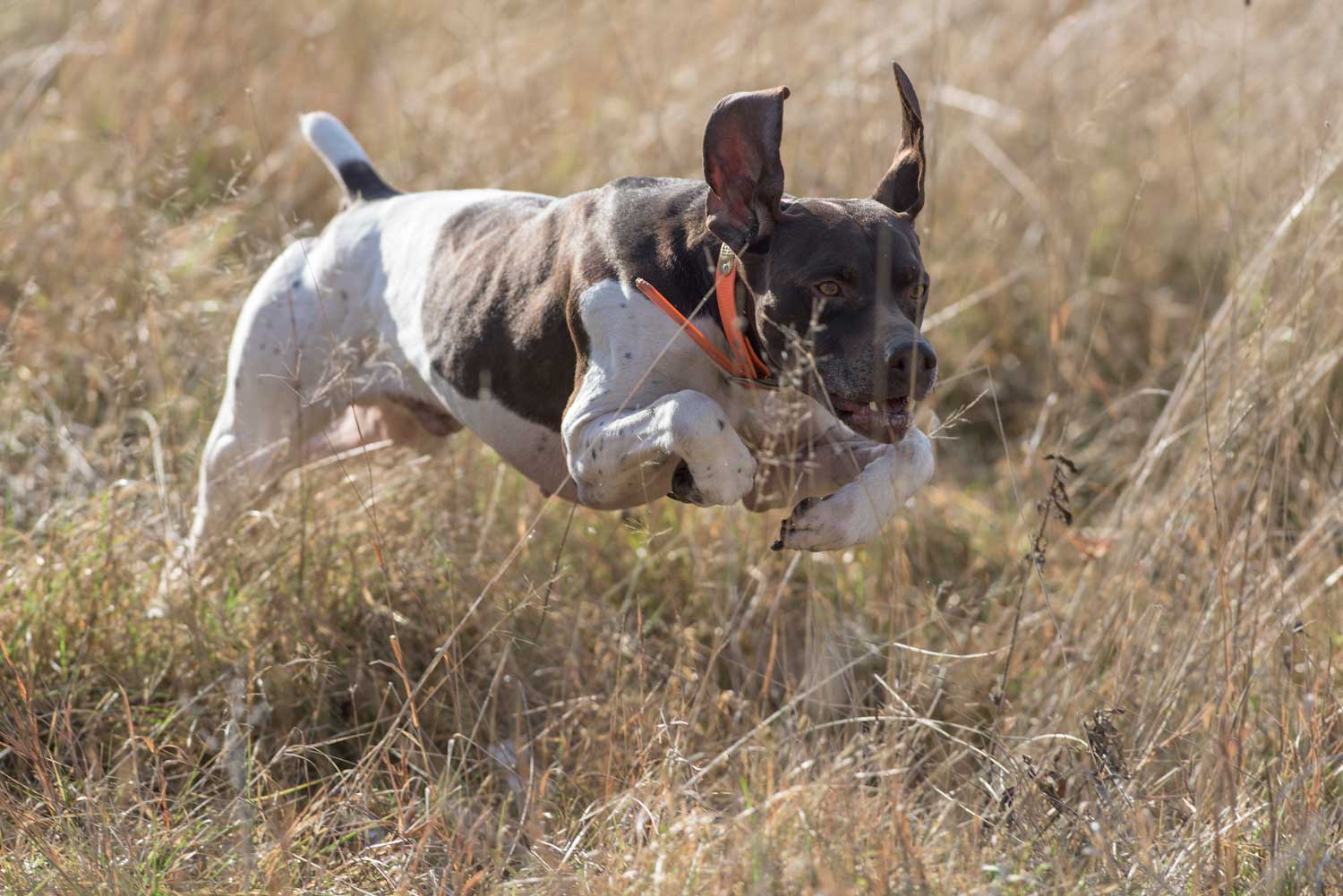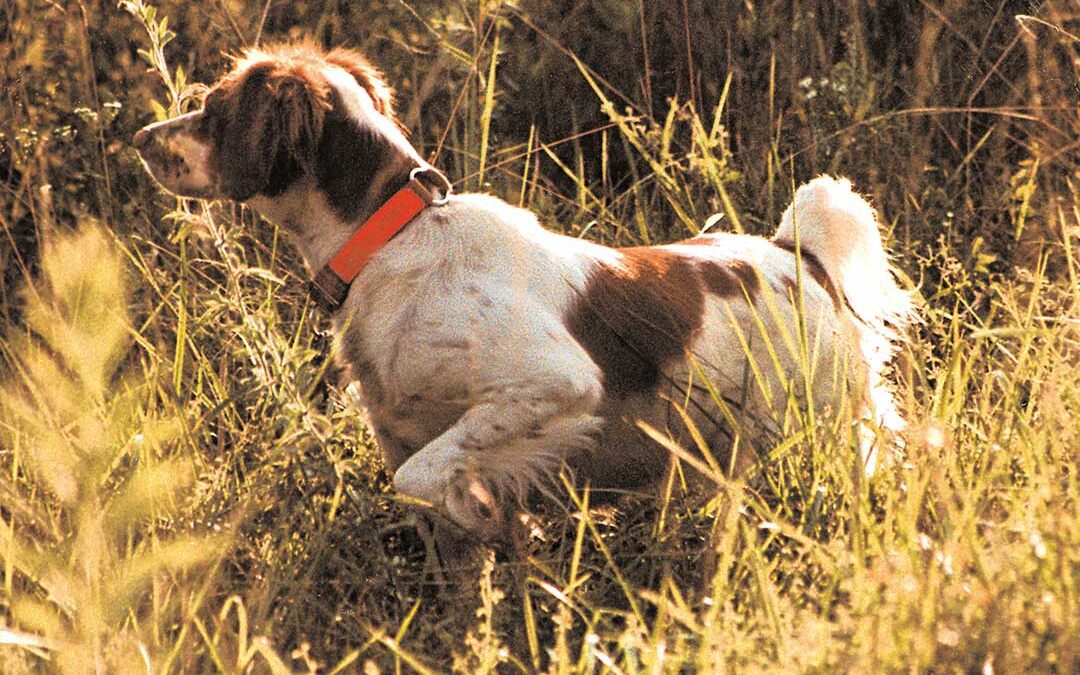This October marks the 21st anniversary of one of the most tragic events in the history of upland bird hunting: opening weekend of the 2003 South Dakota pheasant season. Over the horrifying course of those two days, more than 100 gundogs (no one knows the exact number) died as a result of heatstroke and the complications thereof. And many more, certainly, suffered permanent neurological damage, along with a litany of other debilitating conditions, that compromised not only their ability to perform in the field but their very quality of life.
South Dakota’s veterinarians, as reported by multiple news outlets, were overwhelmed. The casualties began coming in literally minutes after the shooting started; one small-town vet told me that, desperate for a way to cool down more heat-stressed dogs than his clinic facilities could handle, he bought every “kiddie pool” there was to be had in the area. Despite such heroic responses, it’s estimated that one-fourth to one-third of the dogs brought in for treatment ultimately succumbed or were euthanized.
It was, for gundogs, what the Armistice Day Storm of 1941 was for duck hunters. The difference, of course, was that the dogs turned loose to hunt that weekend had no say in the matter.
What those dogs encountered were summer-like temperatures that soared into the 80s, jungly early season cover and, according to all reports, the kind of bird numbers that tend to whip hunters of both the four-legged and two-legged varieties into a frenzy. Another contributing factor—and it was a big one—was that in those days South Dakota still hewed to the quaint albeit perplexing custom of allowing no pheasant hunting until noon through the first two weekends of the season, essentially forcing sportsmen and their dogs afield during the hottest part of the day. There was never any defensible wildlife management-related reason for this practice although it did have the effect of encouraging out-of-state hunters to linger (read: spend more money) in the local watering holes, knowing that they could sleep in without penalty.
This brings to mind the hoary, pre-Women’s Lib joke about the guy who, just back from a South Dakota pheasant hunt, complained to his wife that she forgot to pack his underwear.
“I didn’t forget,” she said, tartly.
“I packed it in your gun case.”
In any event, many of us in the gundog camp hoped that the appalling toll of 2003 would expose the folly of the noon start and persuade the powers that be in the South Dakota Department of Game, Fish & Parks to move the legal shooting hour to 10:00 a.m.—the start time that kicked in on the Monday after the second weekend and stayed in force for the remainder of the season. Two hours may not seem like much, but in October on the Great Plains it can mean the difference between hunting when it’s still reasonably cool and hunting when it’s dangerously hot.
Well, we got our wish—but not until 2020, and for reasons that had nothing whatsoever to do with promoting the welfare of hunting dogs. Still, a win is a win, and better late than never. Round up the usual bromides….
While the memories of the Opening Weekend Tragedy, as I’ve come to think of it, may have faded, we ignore its lessons at our peril. First and foremost of these is that a fat, out-of-shape dog—meaning a dog that hasn’t been properly prepared for the demands imposed by his job description—has no business being thrust into any kind of hunting situation, much less one in which he’s forced to contend with unusual heat. It’s a pretty simple equation: The better your dog’s overall condition, and in particular his cardiovascular condition, the better-equipped he’ll be to take the heat. A dog that’s laboring right out of the gate is a dog that’s on a collision course with disaster.

Some dogs have more built-in heat tolerance than others, of course. I’ve seen pointers that were almost supernatural in this respect, but they also benefited from being in tremendous shape and carrying no superfluous weight. Regardless of your dog’s breed or his individual characteristics, he’ll have a leg up in the heat race if you continually watch his weight, give him regular exercise year-round, and also feed a high-fat, high-protein “performance” diet year-round, i.e., not just during the hunting season. If you follow this formula, you’ll have a solid foundation on which to build, the watchword here not being how you condition your dog, but that you condition your dog.
On the assumption that the readers of this publication are, as a rule, more knowledgeable, conscientious and committed than the “average” hunting dog owner, I like to think I’m preaching to the choir here.
All this having been said, the ultimate responsibility for your dog’s safety rests with you. You have to do the thinking for the entire team, which is a scary thought but helps bring home the importance of exercising good judgement and making sound, smart decisions. It boils down to field management—taking frequent breaks, carrying plenty of water and dispensing it liberally (also taking advantage of whatever natural water you come across) and watching vigilantly for any signs of heat stress (the precursor to heatstroke) such as wobbly gait, violent panting or disorientation.

If you notice any of these symptoms, immediately pull the plug on the hunt and do whatever you can to cool your dog off and lower his core temperature. (“Normal” is around 101° F.) Simply getting him to shade is a start, but the best, most effective remedy is immersion, or near-immersion, in cool water. You should let him drink, too, but only in moderate amounts; drinking too much water too fast can put him at risk for gastric torsion—invariably fatal without prompt veterinary intervention.
Once you take these steps, chances are your dog will come around pretty quickly. But if his condition doesn’t improve within 10 minutes—or if it seems to worsen, obviously—you need to get him to a veterinarian, pronto.
It goes without saying here that prior to your trip you should have identified at least one and ideally two or three veterinarians in the vicinity of your hunting area, loaded their contact information into your phone, and/or written it down in a place where you can easily access it. Why two or three? Because a lot of vets in rural areas are primarily “large-animal” docs who spend more time out of the office than in it.
Enroute to the clinic, pull out all the stops to keep your dog as cool as possible. Run the AC full-blast, cover him with wet towels or blankets, pack him in towel-wrapped ice, cold packs or even cold cans of beer.
But this is a worst-case scenario—one you need to be prepared for, to be sure, but one that, as long as you’re paying attention, you should have no trouble steering clear of. Be aware, be vigilant and remember that whenever the welfare of your dog is at stake, you should always take the conservative approach and err on the side of caution. We accrue regrets enough in the normal course of living without adding the self-inflicted loss of a beloved dog to them.

